TIHS WEB PAGE IS VERY IMPOTANT SO COPY THIS AT TEXT FILE
(とても大事なことが書かれたページなので、コピーとして取っておきます)
Guide to fresh installing macOS High Sierra on a Hackintosh (10.13 Update)
Guides Sticky October 5, 2017
High Sierra, How-to
High Sierra is out. Now it’s time to install it on anything but a Mac. The first rig I got to run High Sierra is this cute and tiny silver build with an ASUS motherboard. High Sierra adds some pretty useful features like a log out button. The only downside I’ve noticed so far is that the screen waking can be a little slower then on Sierra.
If you never built a hackintosh check out our list of compatible parts or the build list for hackintosh friendly parts. This High Sierra guide is compatible with the latest hardware from Coffee Lake all the way back to Ivy Bridge CPU’s. Right now this is just a Desktop guide I’ll be experimenting on laptops in the future and update this guide or create another when that happens.
For those that already have a Hackintosh running Sierra and want to upgrade to High Sierra they’d be better served following: Updating your Hackintosh to High Sierra 10.13. If you would like to run Sierra 12.6 instead of High Sierra for reliability, compatibility or whatever reason see: Guide to installing macOS Sierra on a Hackintosh (Up to 10.12.6)
High Sierra Hackintosh Install Full Guide
This is a full install guide that will walk you through clean installing High Sierra on a custom PC. It’ been made easy into a copy paste guide. This means that the initial configuring that’s required to get macOS up and running have already been preconfigured. There may be some post-install changes that need to made after macOS is installed.
Step 1 – Creating the macOS Installer
To begin the setup of a Hackintosh a macOS installer containing High Sierra must be created on a USB flash drive. Learn how to do that by following: How to make a macOS flash drive installer
Step 2 – Transfer Prebuilt EFI Bootloader
Now that the High Sierra image is on a GUID formatted flash drive the EFI partition of that drive needs to have a modified folder called EFI added to it. The EFI folder contains the hackintosh files necessary to boot macOS on third party hardware using Clover Bootloader.
The EFI folder is added to something called the EFI Partition . To access the EFI Partition we must mount it first:
Download Clover Configurator
Open Clover Configurator
Select Mount EFI under TOOLS
Click Mount Partition for Install macOS….
Click Open Partition (This is your EFI Folder)
Now we are going add the hackintosh EFI folder to the partition you mounted:
Delete the folder called EFI in the partition you mounted
Download Hackintosher-High-Sierra-10.13-EFI.zip
Unzip Hackintosher-High-Sierra-10.13-EFI.zip
Copy the unzipped EFI folder
Paste the copied EFI into your mounted EFI partition or /Volumes/EFI
Step 3: Configuring config.plist
These mini steps need to only be followed if each condition applies. It’s recommended that you do the initial install using integrated graphics for a problem free install, however I’ve been able to install High Sierra using my RX 560. The changes will be made to the EFI folder you just pasted onto your flash drive in Step 2.
Step 3.1: Sky Lake, Haswell, Ivy Bridge users Only
The default config.plist is configured for a Coffee Lake or Kaby Lake CPU. If you are using an older Skylake, Haswell or Ivy Bridge CPU then you will may need to make changes to the SMBIOS section located in config.plist in order to boot macOS by mimicking the properties of an older Mac. Skip this step only if using a Coffee Lake or Kaby Lake CPU.
If you are using a Sky Lake or Haswell CPU:
Navigate to /Volumes/EFI/EFI/CLOVER/
Right-click config.plist
Select Open With Clover Configurator
Click SMBIOS on left column
Select the Up-Down arrow in the bottom right corner of Clover Configurator to change the SMBIOS depending on your CPU:
Sky Lake: Select iMac 17,1 or iMac 14,2
Haswell: Select iMac 14,2
Ivy Bridge: Select iMac 14,2
Save config.plist
Step 3.2: Pentium users Only
If you are using a Pentium processor such as the G4560/G3258 you will in addition to following this step will need a Nvidia/AMD graphics card to run your hackintosh as the integrated iGPU on Pentium CPU’s are not currently supported on Hackintoshes.
Follow Steps 1-4 of https://hackintosher.com/guides/hackintosh-intel-pentium-g4560-kabylake-processor/
Step 3.3: MSI Motherboard users Only
MSI motherboards may require this step in order to boot macOS. If you are not using an MSI motherboard please skip this step and move to Step 4.
Download OsxAptioFix2Drv-free2000.efi.zip.
Unzip OsxAptioFix2Drv-free2000.efi
Navigate to location /Volumes/EFI/EFI/CLOVER/drivers64UEFI/ of your mounted EFI partition
Paste OsxAptioFix2Drv-free2000.efi here
Delete OsxAptioFix3Drv.efi while in this folder
Step 3.4: Gigabyte / ASUS Motherboard users Only
A checkbox needs to be set in your config.plist in order to prevent the computer from restarting instead of properly shutting down. Follow this step only if you have a Gigabyte or ASUS motherboard otherwise move on to Step 4.
Open config.plist with Clover Configurator
Highlight Acpi on left column
Under fixes check FixShutdown
Save config.plist
Step 3.5: ASUS / ASRock / MSI / Motherboard users Only
Open config.plist with Clover Configurator
Highlight Boot on left column
Under Arguments press the drop down arrow next to darkwake
Select darkwake = 1 if using an ASUS motherboard
Select darkwake = 8 if using an ASROCK or MSI motherboard
Save config.plist
Step 3.6: USB Patch for High Sierra
The config.plist needs a USB patch for High Sierra and the patch is different for each version of macOS High Sierra 10.13.0 to 10.13.6. A patch is included for 10.13.6 so those that downloaded from the App Store don’t need to add any patch. If you downloaded a copy of macOS somewhere other than the App Store and it’s not version 10.13.6 you will need to add or enable a USB port Limit patch for your specific version of High Sierra so that all USB ports work: List of Hackintosh USB Port Limit Patches
Step 4 – Recommended BIOS Settings
Restart your computer and press the DEL key or required key to enter BIOS when computer posts splash screen.
Wit the EFI boot partition setup we now need to change some BIOS settings that are macOS and hackintosh friendly 🙂
Recommendation: Check out the builds section and find a motherboard by the same manufacturer as you have. Then scroll down to it’s BIOS settings to find the exact location of each setting that needs to be changed if your having trouble.
You’re motherboard may not have all of these settings and that’s okay:
Change the following settings:
Virtualization : Enabled
VT-d : Disabled
XHCI Hand-Off : Enabled
Legacy USB Support: Auto/Enabled
IO SerialPort : Disabled
Network Stack : Disabled
XMP Profile : Auto / Profile 1/Enabled
UEFI Booting set to Enabled and set Priority over Legacy
Secure Boot : Disabled
Fast Boot : Disabled
OS Type: Other OS
Wake on LAN : Disabled
Based on the GPU you’re using change the following settings:
Dedicated graphics card:
Integrated Graphics : Disabled
Graphics: PEG/PCIe Slot 1
Initial Display Output : PCIe 1 Slot
Intel iGPU:
Integrated Graphics : Enabled
Graphics: IGD/Integrated/iGPU/CPU Graphics
DVMT Pre-Allocated : 128M
Note: If you set Primary Display to CPU Graphics and DVMT Pre-Allocated setting doesn’t show. Save and exit BIOS and reenter and it should be there
Setting Boot Device:
You’ll want to be using the USB Flash Drive as the primary boot device until your hard drive becomes bootable at the end of Step 6. There are two ways to go about doing this:
Option 1: Press F8/F11/F12 on startup each time to select a temporary boot device until the boot partition on the drive you install macOS is configured. If you want to do temporary booting you will select the version of your USB Drive starting with UEFI: in it’s name. (For example I used a SanDisk flash drive so I would select UEFI: Sandisk, Partition 1)
Option 2: Enter BIOS and set Boot → Boot Option #1: UEFI : XXX (For example I used a SanDisk flash drive so I would select UEFI: Sandisk, Partition 1) This is easier if you don’t want to spam F8 on startup every time to boot macOS.
Set Boot Option #1 ASUS BIOS
This is where you would set the Boot Option in BIOS if you followed Option 2
Press F10 to Save and Exit the BIOS
Step 5 – Installing macOS
The next step is to install macOS and then after copy the EFI folder from your flash drive’s boot partition over to the boot partition of the drive macOS is installed on. If you need to walked through the install follow: High Sierra Clover Install Walkthrough
Note: Most people like to install new versions of macOS using integrated graphics. Since I included the files for AMD cards you may be able to install macOS like I did with the card plugged in. Some people may have trouble installing High Sierra with a Nvidia card plugged in. If you have one you may want to use integrated graphics and go back to the BIOS settings and configure for an iGPU.
Hackintosh Post-Install
Now that you have macOS up and running you should also be able to access the internet since the included Ethernet kexts are already in EFI/Clover/kexts/Other However you may want to delete the ones you don’t need as I included them all.
Step 6 – Improving Sleep
If you don’t want your hackintosh turning on in the middle of the night you need to disable two settings.
Open the Settings App
Click Energy Saver
Uncheck
Uncheck Wake for Ethernet Network access
Uncheck Enable Power Nap
Energy Saver MacOS
It’s very important that you uncheck “Enabled Power Nap” and ‘Wake for Ethernet network access” so that your computer will wake properly from sleep and wont turn on the middle of the night.
Step 7 – Graphics Card
If using a compatible graphics card then you will need to install the fixes to get hardware detection and acceleration.
For AMD I’ve already included the files necessary to get most AMD graphic cards like the RX 560, 570 and 580 working, but there are some extra steps like NVRAM detection and maybe ig-platform-id if using a KabyLake/CoffeeLake CPU that need to be set: How to hackintosh AMD graphics cards in Sierra 10.12.6+
To get Nvidia graphic cards working in High Sierra you need to enable SIP temporarily to prevent being locked out after the Web Drivers install see:
→ How to properly Install Nvidia Drivers on High Sierra 10.13 ←
Step 8: Hackintosh Sound
I setup the EFI folder for ALC1220 as that’s the most common audio codec used for Kabylake motherboards. If you are using a different audio chipset codec such as ALC892, S1220A, ALC887, ALC1150 then all you need to do is change a single number to get audio working. Click the link below to go to the audio guide:
→Read: Hackintosh Audio Guide – Layout ID ←
Step 9: HDMI Audio
This is an optional step if you want toHDMI audio can be tricky to get working and is much more difficult with a Pascal Nvidia GPU:
Dedicated: Hackintosh HDMI Audio + DisplayPort GFX Card Sound Guide
IGPU: Hackintosh Integrated Graphics (iGPU) HDMI Audio Guide

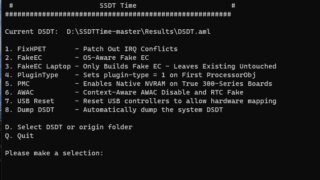
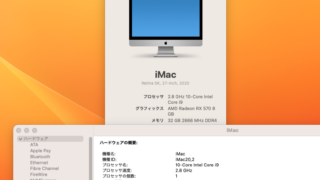
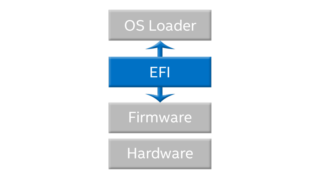
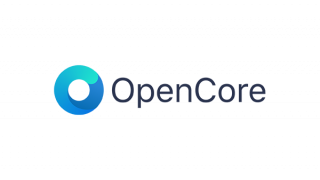
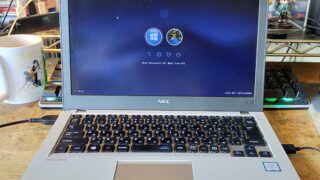


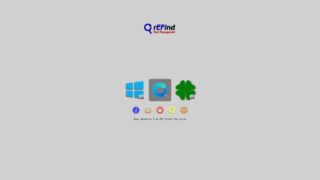
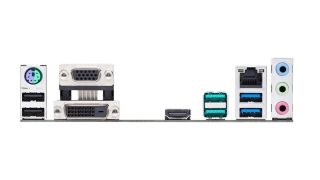
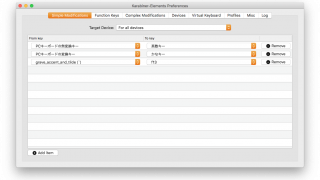

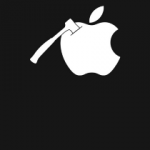
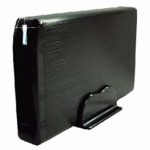
コメント